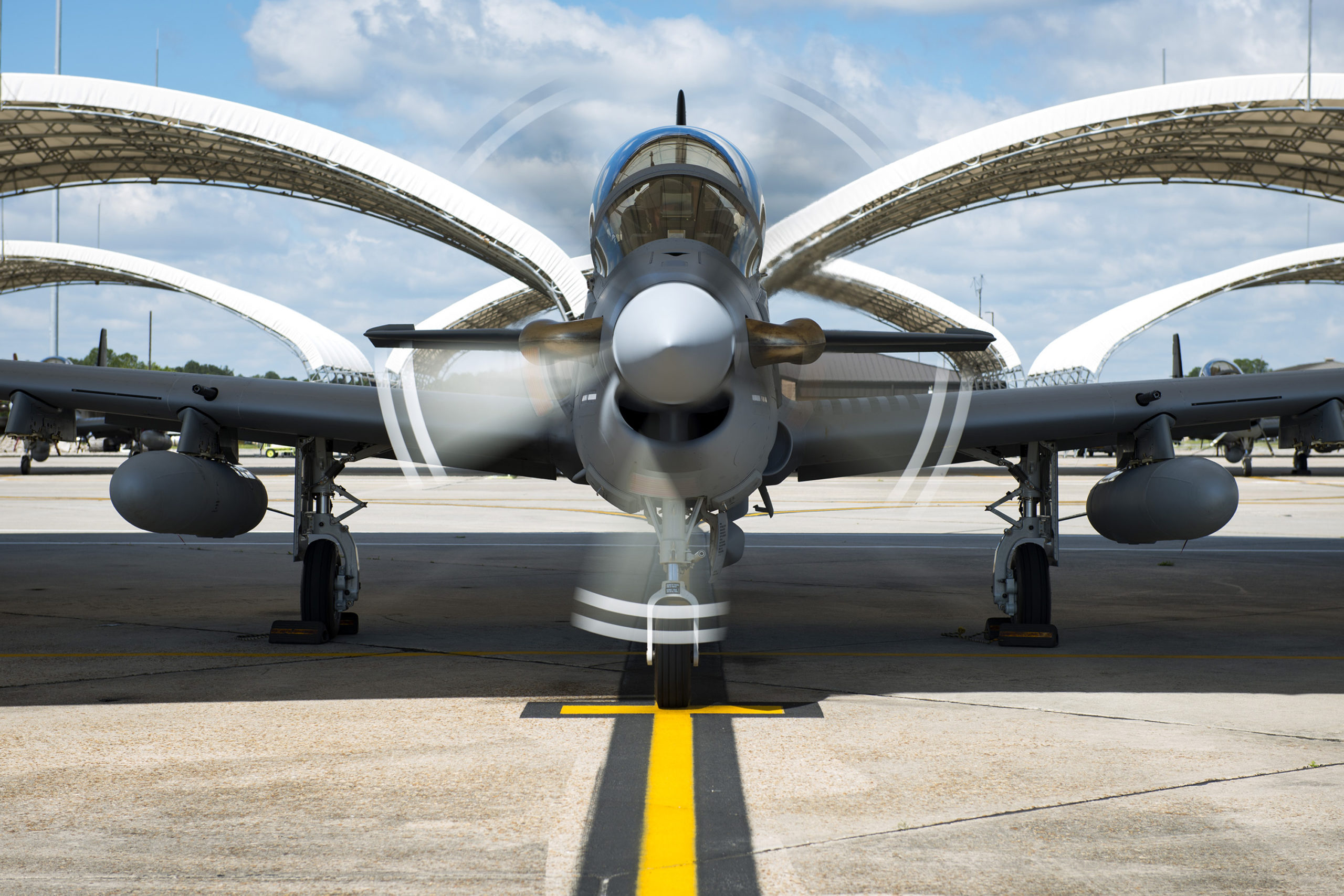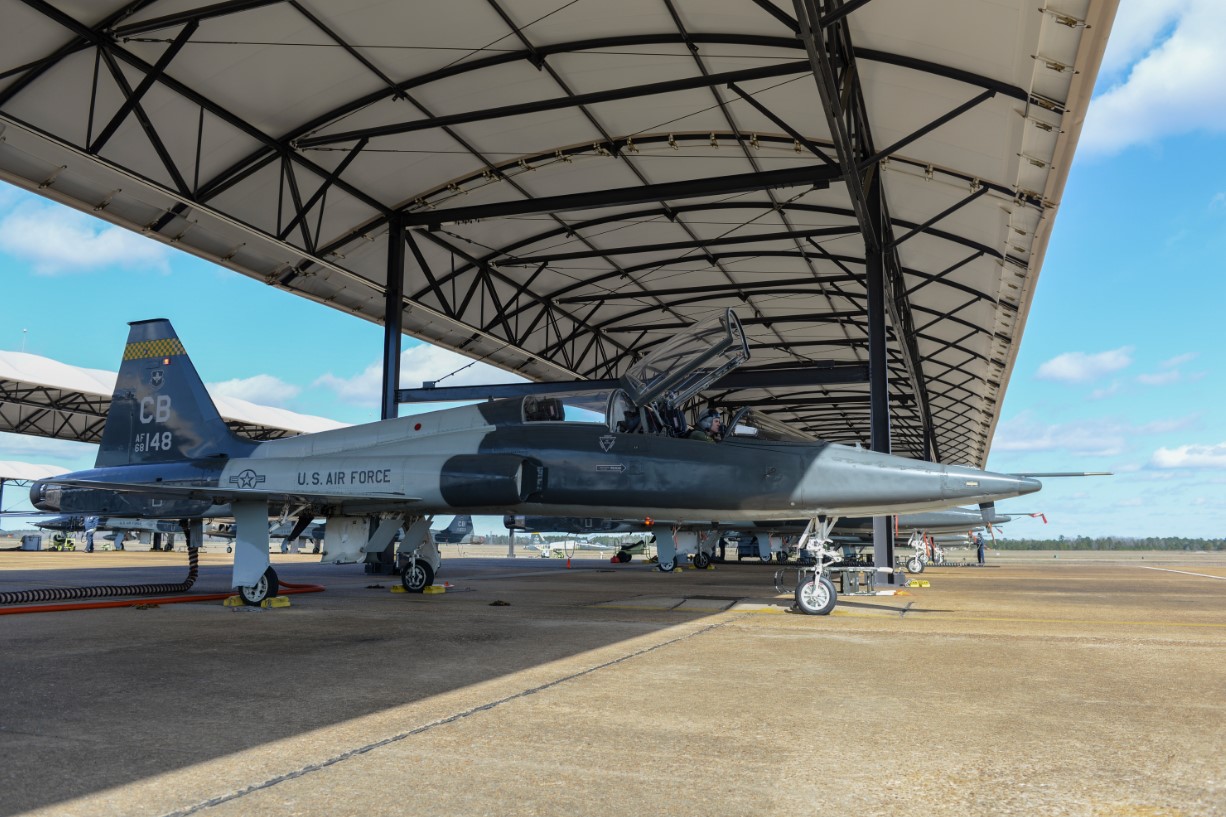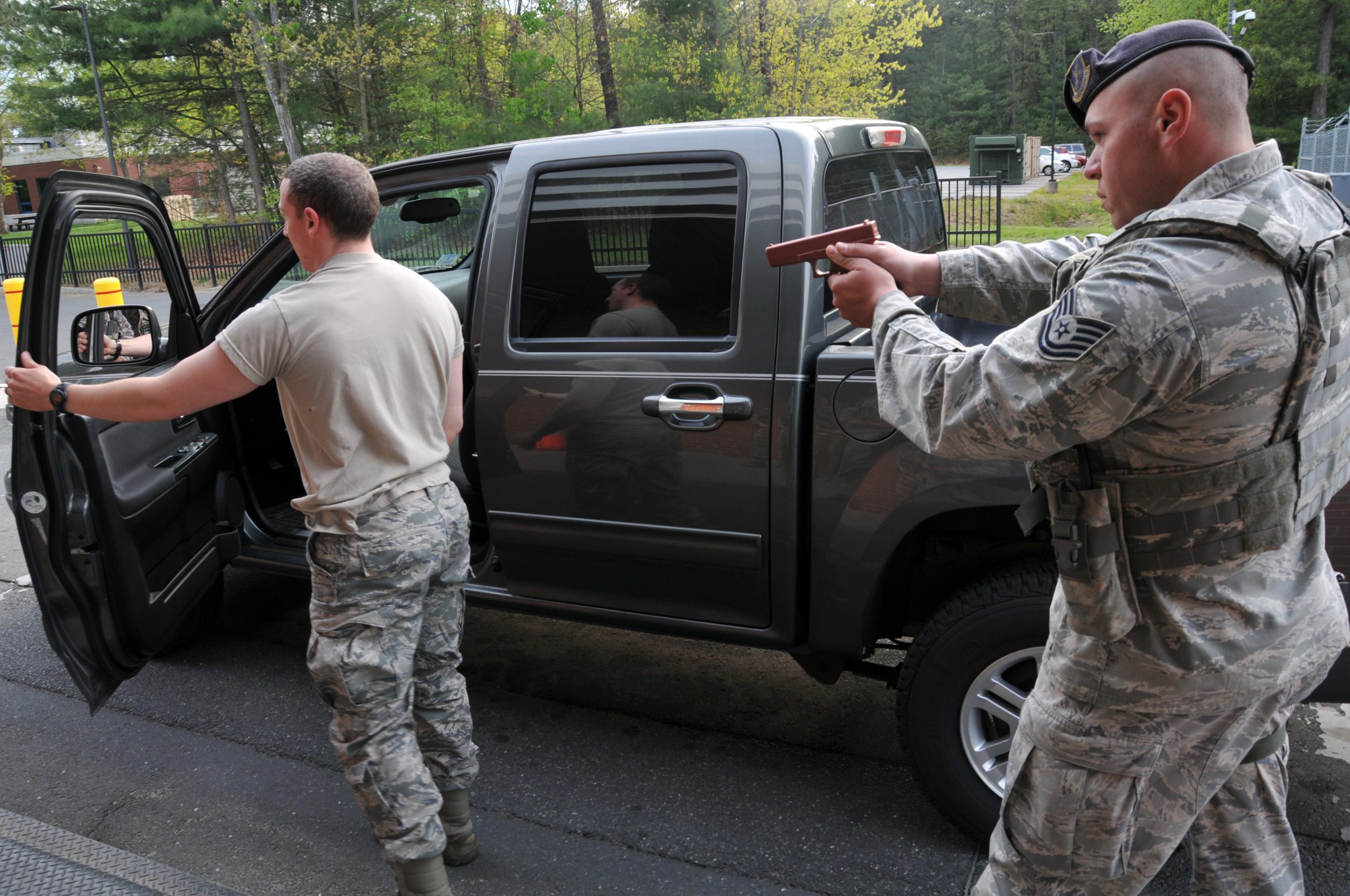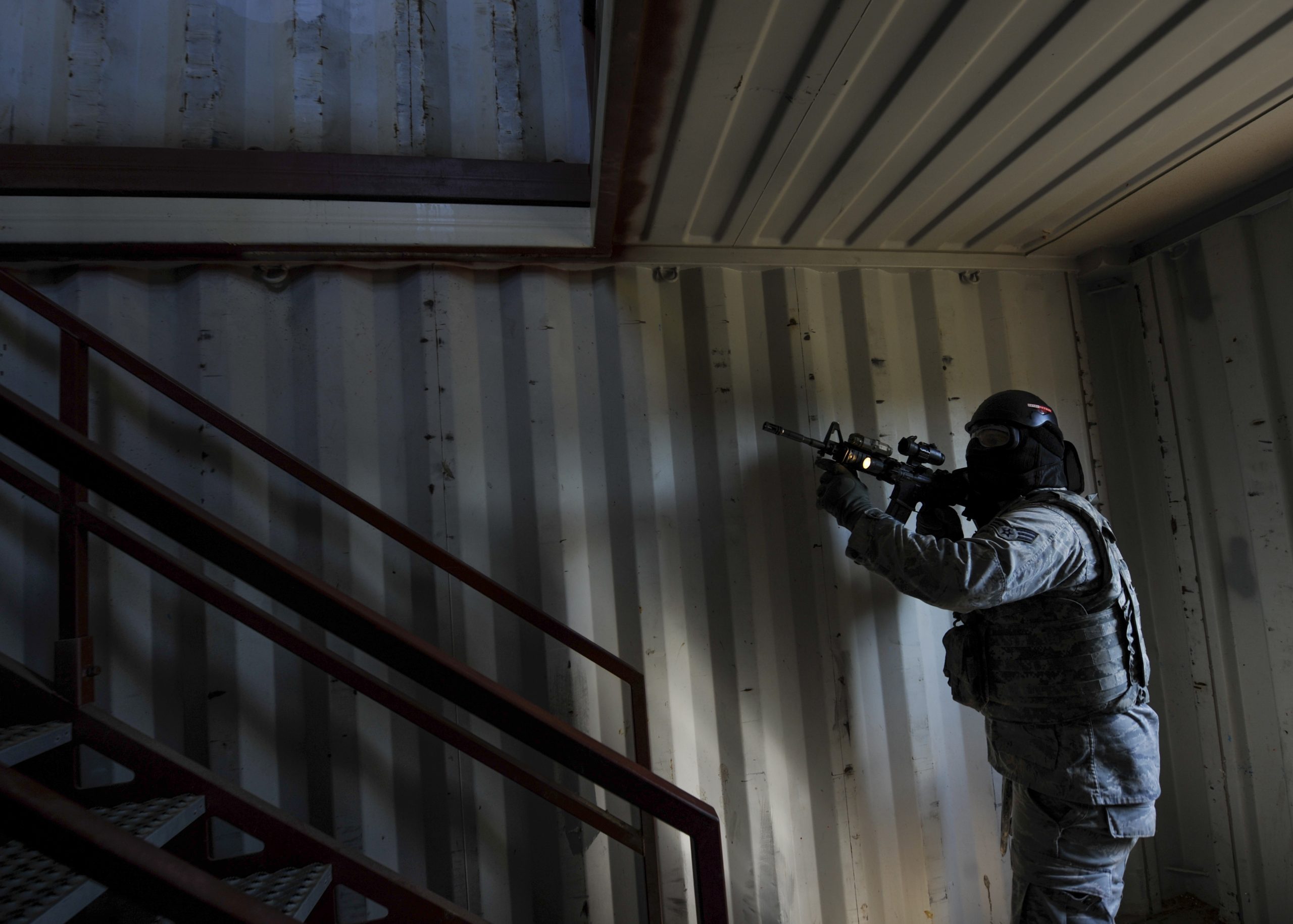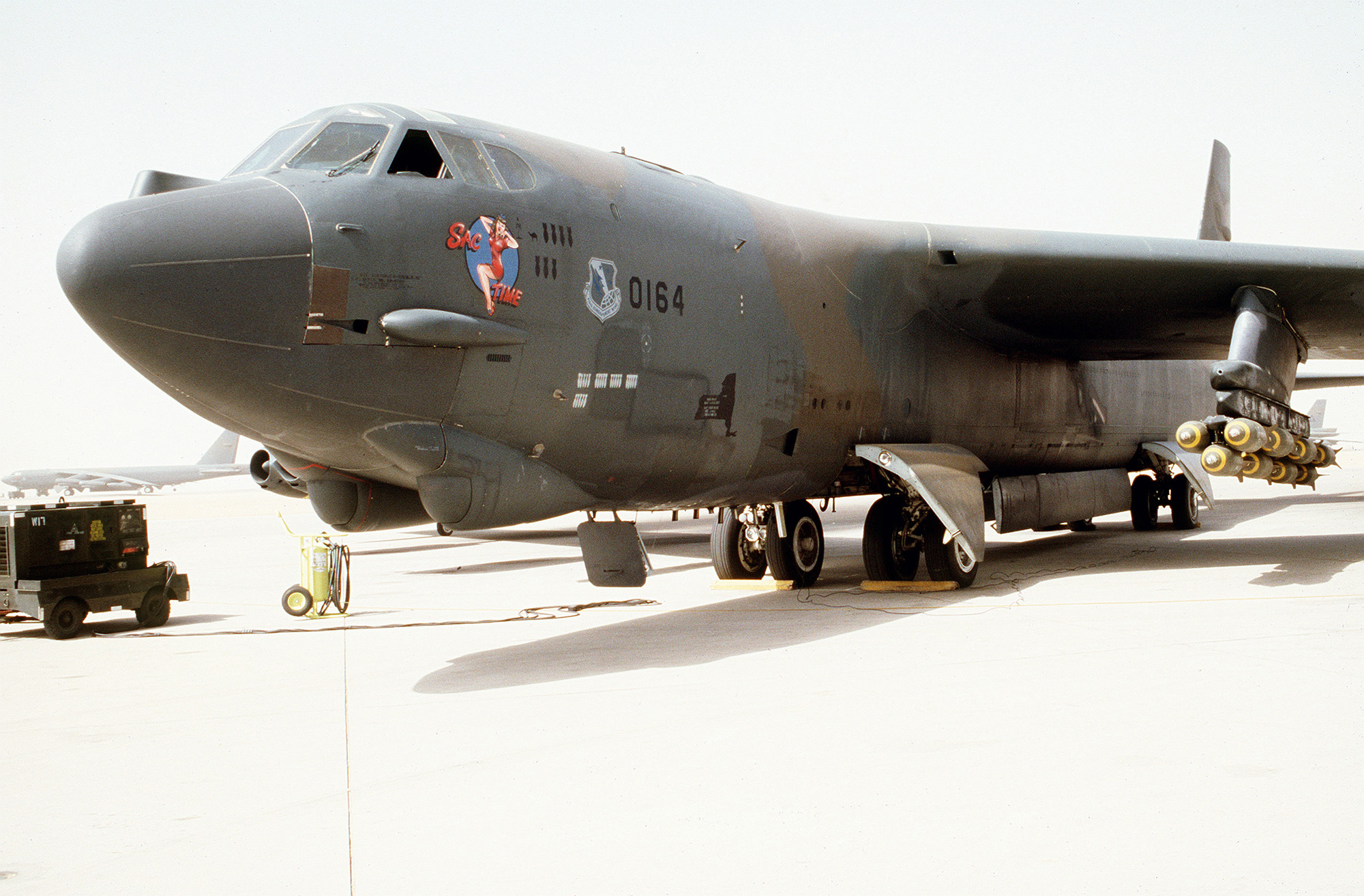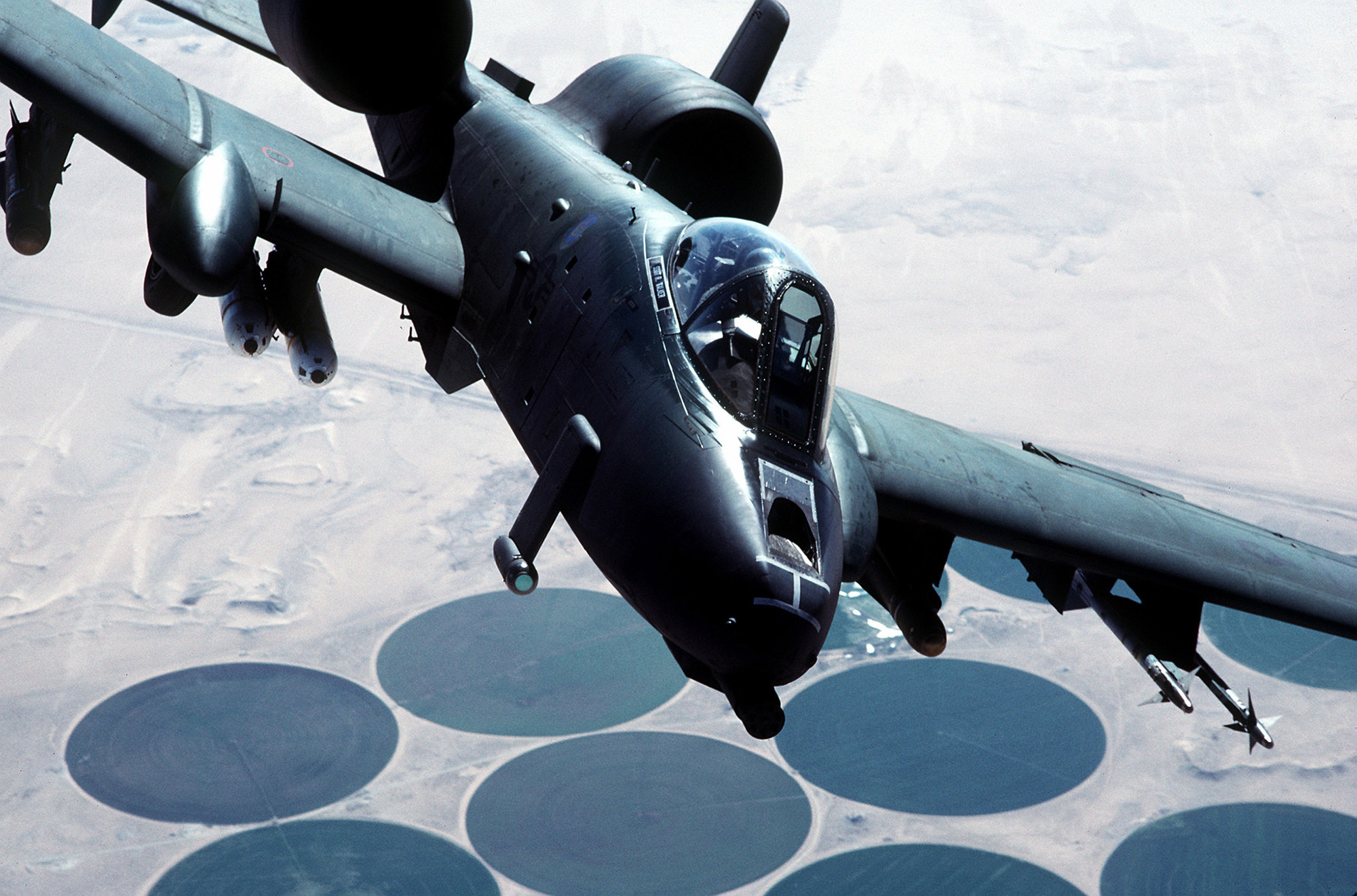When an A-29 light attack plane crashed in Afghanistan last summer, the U.S. military reassured the public that its pilot had ejected and was rescued. But the reality was more complicated.
The unidentified Airman, an American flying an Afghan Air Force Super Tucano as part of the U.S. training mission in the country, is now permanently, partially disabled, according to Air Force Safety Center data obtained by Air Force Magazine. The A-29 was destroyed after suffering from what initially seemed to be mechanical issues.
Air Education and Training Command, the organization in charge of the training wing the pilot belonged to, declined to provide more details about the pilot’s condition or what the Airman is doing now.
“Because it was an Afghan A-29, the Air Force did not have the lead for the accident investigation,” AETC spokesperson Marilyn C. Holliday said. “The Air Force did complete a safety investigation, which is not releasable.”
The July 9, 2020, incident is one of the 72 total aviation accidents that occurred in the Air Force over the course of fiscal 2020. Air Force Magazine on Feb. 19 obtained more details of those mishaps, some of which were not made public at the time. The data is current as of Feb. 16.
Statistics show the Air Force is “continuing the generally decreasing trend of aviation Class A mishaps over the last 10 years,” the service said.
But the most destructive accidents have not tapered off nearly as much as the Air Force might like, given its push to improve maintenance and training protocols, while those that caused lesser damage also rose.
Thirteen of the 72 total accidents caused injury or death, according to an Air Force Magazine analysis. Accidents are broken down into flight mishaps, flight-related mishaps, and ground operations mishaps.
Twenty-nine Class A aviation mishaps occurred in fiscal 2020, including 23 incidents involving manned aircraft and six involving unmanned aircraft. Those numbers are slightly higher than the 26 mishaps in fiscal 2019, but nearly on par with the 10-year average of 31 accidents, the Air Force Safety Center said. The service has seen 29 mishaps a year on average over the past five years, the center added.
Class A incidents are those in which Defense Department aircraft are destroyed or total more than $2.5 million in damages, or where a person is killed or permanently, fully disabled.
Seven people died as a result of aviation accidents between Oct. 1, 2019, and Sept. 30, 2020, the Air Force said. Fourteen aircraft were destroyed in that time period as well. Both figures are slightly lower than the five- and 10-year averages.
For Class B accidents, the Air Force saw 39 manned aircraft mishaps and four unmanned mishaps, totaling 43 incidents. That’s a jump from 36 Class B accidents in the previous year—about the same as the five-year average of 45 accidents per year, but lower than the 10-year average of 49.
“Overall, statistics tend to fluctuate from year to year, so the service looks at trends within the data to see if there are significant changes and, more importantly, to determine if there are common issues,” the Safety Center said in a statement to Air Force Magazine.
F-22 fighter jets saw the most severe problems most often, with five Class A mishaps over the course of fiscal 2020. A-10s, C-17s, and F-15s tied for the most Class B mishaps. Among unmanned aircraft, the MQ-9 Reaper logged seven Class A and B crashes in that time.
Among the previously unreported Class A mishaps:
- Oct. 13, 2019: A C-17 from the Tennessee Air National Guard’s 164th Airlift Wing suffered engine damage after shutting down because of “high exhaust gas temperature” upon startup in Delaware. No injuries were reported.
- March 31, 2020: A C-17 with the 62nd Airlift Wing in Kuwait suffered turbine damage because of a similar “high exhaust gas temperature” problem, but safely returned to base. No injuries were reported.
- May 1, 2020: An F-22 at the 1st Fighter Wing at Joint Base Langley-Eustis, Va., saw an engine stall shortly after takeoff, causing the plane to shut down in flight. The fighter jet returned to base and no injuries were reported.
- July 14, 2020: An F-22 at the 325th Fighter Wing at Tyndall Air Force Base, Fla., incurred damage to the right engine because of foreign object debris. No injuries were reported.
- July 24, 2020: An F-22 suffered a hydraulic fire during ground operations at the 325th Fighter Wing. No injuries were reported.
- July 26, 2020: A B-1 at the 28th Bomb Wing at Ellsworth Air Force Base, S.D., sucked a cable into an engine during a maintenance run, causing significant engine damage. No injuries were reported.
- Aug. 19, 2020: A C-17’s onboard inert gas generating system caught fire during takeoff, injuring the plane and three people at the 60th Air Mobility Wing at Travis Air Force Base, Calif.
The Air Force also recorded six Class A incidents involving unmanned aircraft, including one on July 24, 2020, where an unnamed drone was completely destroyed in a crash while controlled by an Air Force Special Operations Command unit in an undisclosed location. It’s possible that aircraft could be a secretive RQ-170 reconnaissance drone or any others kept out of the public eye.
MQ-9 Reapers comprised the rest of the most severe incidents. One “intentional ditching” over Somalia in June 2020 led to a total aircraft loss for the 432nd Wing out of Creech Air Force Base, Nev. That same month, the New York Air National Guard saw another MQ-9 damaged when it lost thrust upon takeoff and left the runway.
Reapers were completely destroyed in August 2020 in an unknown location while flying for the 27th Special Operations Wing, and in September 2020 in Kuwait while flying for an undisclosed unit. Another MQ-9 at Holloman Air Force Base, N.M., was damaged upon takeoff on Sept. 2, 2020, as well.
Nineteen types of airframes, from the A-10 to the CV-22, were involved in Class B mishaps over the course of the year. Their woes span engine fires, bird strikes, foreign object debris, and more.
Class B events meet at least one of these criteria: they incur damages costing between $600,000 and $2.5 million; cause a permanent, partial disability; or lead to inpatient hospitalization of at least three personnel.
An MQ-9 in Jordan was “struck by [a] vehicle” when taxiing, causing major damage to both the drone and the vehicle, according to the Air Force. The lower hatch of a U-2 spy plane’s camera bay fell off the aircraft mid-flight. Multiple F-16 fighter jets were “damaged in weather” in South Korea, the same day a typhoon brought heavy rain to parts of the country, but landed without incident.
One B-1 bomber from the 7th Bomb Wing in Nevada saw an electrical malfunction in flight that sent smoke into the cockpit, then blew out a tire upon landing. On one unfortunate day for an A-10 in Georgia last April, the aircraft’s gun malfunctioned, its engine was damaged, its “canopy departed,” and it landed with its landing gear up—but no injuries were reported.
The Safety Center also shed more light on the XQ-58 Valkyrie crash in October 2019 that rendered the prototype “Skyborg” drone temporarily unusable. The Valkyrie experienced “several failures” while trying to land during a test in Arizona, causing “severe structural damage.”
“In final descent, the prototype cushion system, which was employed for the initial test series but is not intended for ultimate operational use, suffered an anomaly resulting in the aircraft sustaining damage upon touchdown,” Valkyrie manufacturer Kratos said, according to Inside Defense.
The wingman drone returned to flight testing in January 2020.
Not all entries in the list provided by the Air Force included damage costs; those that did totaled nearly $29 million. The bulk of that cost, $23.6 million, comes from a C-130J’s hard landing in Germany in April 2020. It is slightly more expensive than the $21 million in damage cited in the Air Force’s accident investigation for the event released Feb. 16.
The Air Force has already incurred at least five Class A mishaps so far in fiscal 2021, including the Feb. 19 T-38 crash in Alabama that killed 23-year-old 1st Lt. Scot Ames Jr. and a Japanese student pilot.
“We are a close-knit family and the loss of our teammates affects us all,” said Col. Seth Graham, commander of the 14th Flying Training Wing—the same wing to which the now-disabled A-29 pilot belonged. “The strength of our bond is what will help us get through it together.”
Read the entire list of fiscal 2020 accidents here.
